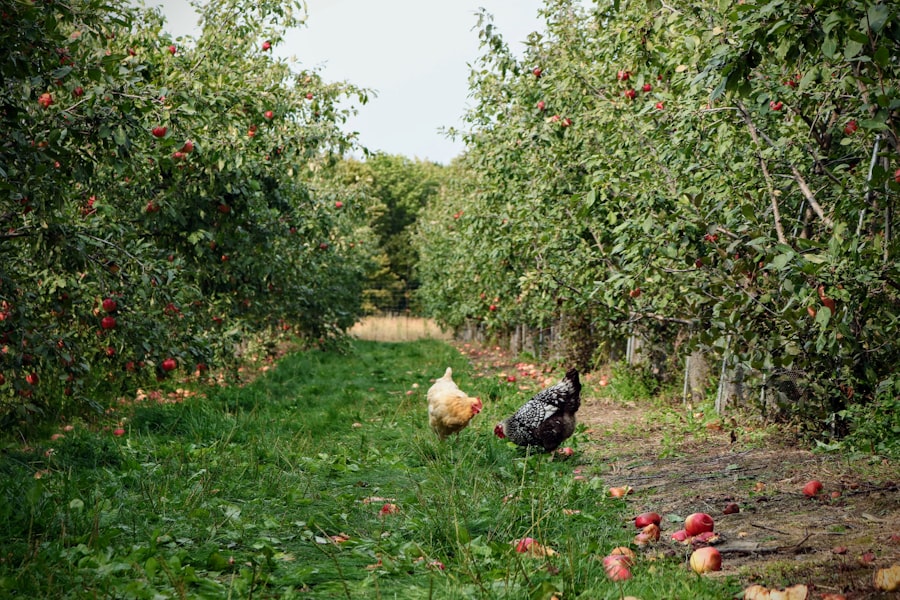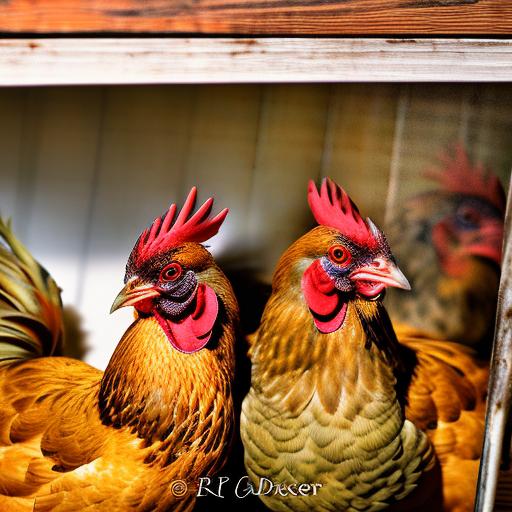Keeping chickens inside the house is becoming an increasingly popular trend among urban dwellers and suburban homeowners alike. While traditionally chickens have been kept in outdoor coops or on farms, more and more people are discovering the benefits of having these feathered friends as indoor pets. This article will explore the reasons behind this growing trend, as well as the benefits and challenges of keeping chickens inside the house.
One of the main reasons why keeping chickens indoors is gaining popularity is the companionship they provide. Chickens are social animals and can form strong bonds with their human caretakers. They can be trained to come when called, enjoy being held and petted, and even learn tricks. Having chickens as indoor pets can bring joy and entertainment to the household.
Another major benefit of keeping chickens indoors is the availability of fresh eggs. With their own personal egg-laying machines right in the house, chicken owners can enjoy a constant supply of organic, free-range eggs. Not only are these eggs delicious and nutritious, but they also eliminate the need to purchase eggs from the grocery store, reducing reliance on factory-farmed eggs.
Key Takeaways
- Keeping chickens inside the house is a trending idea that has gained popularity in recent years.
- Benefits of keeping chickens inside the house include fresh eggs, natural pest control, and companionship.
- Factors to consider before keeping chickens inside the house include space, noise, and potential health hazards.
- Types of chicken coops suitable for indoor use include DIY options and pre-made options.
- Essential features of an indoor chicken coop include proper ventilation, nesting boxes, and easy access for cleaning.
Benefits of Keeping Chickens Inside the House
In addition to companionship and fresh eggs, there are several other benefits to keeping chickens inside the house. One of these benefits is the positive impact they can have on mental health. Studies have shown that interacting with animals can reduce stress levels and improve overall well-being. The presence of chickens in the house can provide a sense of calm and relaxation, making them excellent therapy animals.
Furthermore, having chickens indoors can also be educational for children and adults alike. It provides an opportunity to learn about animal behavior, biology, and responsibility. Children can learn about the life cycle of chickens, how to care for them, and even participate in collecting eggs. This hands-on experience can foster a sense of empathy and respect for animals.
Factors to Consider Before Keeping Chickens Inside the House
Before bringing chickens indoors, there are several factors that need to be considered. One of the most important factors is space. Chickens require enough space to move around comfortably and exercise. It is essential to ensure that the indoor coop provides enough room for the chickens to stretch their wings and engage in natural behaviors.
Another factor to consider is noise. Chickens can be noisy animals, especially when they are laying eggs or feeling threatened. It is important to assess whether the noise level of chickens indoors will be tolerable for the household members and neighbors. Additionally, the odor of chicken droppings can be a concern, so proper ventilation and cleaning routines should be in place.
It is also crucial to check local regulations and legal requirements before keeping chickens indoors. Some areas have restrictions on keeping livestock or poultry within residential areas. It is important to familiarize oneself with these regulations and obtain any necessary permits or licenses before bringing chickens into the house.
Types of Chicken Coops Suitable for Indoor Use
When it comes to indoor chicken coops, there are several options available. One option is to build a DIY coop using materials such as wood or PVC pipes. This allows for customization and can be a cost-effective solution. Another option is to purchase pre-made coops specifically designed for indoor use. These coops often come with features such as built-in nesting boxes and easy-to-clean trays.
Both DIY coops and pre-made coops have their pros and cons. DIY coops allow for more flexibility in design and size, but they require more time and effort to construct. Pre-made coops, on the other hand, offer convenience and may come with additional features, but they may be more expensive.
Chicken Coop Design and Layout for Indoor Use
Designing an indoor chicken coop requires careful consideration of both functionality and aesthetics. The coop should be designed in a way that allows for easy access to the chickens, cleaning, and egg collection. It should also provide a safe and comfortable environment for the chickens to thrive.
In terms of aesthetics, the coop can be designed to blend in with the interior decor of the house. It can be painted or decorated to match the style of the room. Additionally, incorporating windows or clear panels into the design can allow for natural light to enter the coop and provide a view of the chickens.
Size and Space Requirements for Indoor Chicken Coops

When it comes to size and space requirements, it is important to provide enough room for the chickens to move around and exercise. The minimum space requirement for each chicken is about 4 square feet. However, it is recommended to provide more space if possible, as this will contribute to their overall well-being.
In addition to floor space, it is also important to consider vertical space. Chickens like to perch and roost, so providing enough height in the coop is essential. This can be achieved by incorporating roosting bars or shelves at different heights.
Essential Features of an Indoor Chicken Coop
There are several essential features that every indoor chicken coop should have. One of these features is proper ventilation. Good airflow is crucial for maintaining a healthy environment and preventing the buildup of ammonia from chicken droppings. Ventilation can be achieved through windows, vents, or fans.
Another important feature is lighting. Chickens require a certain amount of light each day to maintain their circadian rhythm and egg production. Natural light is ideal, but if that is not possible, artificial lighting can be used to supplement their needs.
Additionally, the coop should have nesting boxes where the chickens can lay their eggs. These boxes should be dark and secluded to provide a sense of privacy for the chickens.
Materials Needed for Building an Indoor Chicken Coop
When it comes to building an indoor chicken coop, there are several materials that can be used. Wood is a popular choice due to its durability and natural aesthetic. It can be used to construct the frame, walls, and flooring of the coop. However, it is important to choose untreated wood to avoid any potential harm to the chickens.
PVC pipes are another option for building an indoor chicken coop. They are lightweight, easy to work with, and resistant to moisture. PVC pipes can be used to create the frame of the coop and can be covered with wire mesh or plastic panels.
Each material has its pros and cons, so it is important to consider factors such as cost, durability, and ease of maintenance when choosing the materials for an indoor chicken coop.
Maintenance and Cleaning of Indoor Chicken Coops
Regular maintenance and cleaning of indoor chicken coops are essential for the health and well-being of the chickens. Coops should be cleaned at least once a week to remove droppings, feathers, and any other debris. This can be done using a shovel or rake, followed by a thorough disinfection using a poultry-safe cleaning product.
It is also important to regularly check for signs of pests or parasites in the coop. Common pests include mites, lice, and rodents. If any signs of infestation are detected, appropriate measures should be taken to eliminate the pests and prevent further infestation.
Is Keeping Chickens Inside the House Right for You?
In conclusion, keeping chickens inside the house can be a rewarding experience for those who have the space, time, and commitment to care for them properly. The benefits of companionship, fresh eggs, and therapeutic value make it an appealing option for many people. However, it is important to consider factors such as space, noise, odor, and legal requirements before bringing chickens indoors.
Designing and building an indoor chicken coop requires careful consideration of factors such as size, ventilation, lighting, and materials. Regular maintenance and cleaning are also necessary to ensure the health and well-being of the chickens.
Ultimately, the decision to keep chickens indoors should be based on individual lifestyle and preferences. It is important to assess whether the benefits outweigh the challenges and whether one is willing to make the necessary commitment to provide a suitable environment for these feathered friends.
If you’re considering keeping chickens inside your house, you may be wondering how to create a comfortable and functional living space for them. Look no further than this article on chicken coop interior ideas from Poultry Wizard. They provide valuable insights and inspiration on how to design a coop that meets the needs of your feathered friends while also fitting seamlessly into your home. From choosing the right flooring materials to creating cozy nesting areas, this article covers it all. For more information on where to put your chicken coop or if you’re specifically interested in a chicken coop in Muskegon, check out these helpful articles: Where to Put Chicken Coop and Chicken Coop Muskegon.
FAQs
Can I keep chickens inside my house?
Yes, you can keep chickens inside your house, but it is not recommended. Chickens require a lot of space, fresh air, and sunlight to thrive, which may not be possible to provide inside a house.
What are the benefits of keeping chickens inside?
Keeping chickens inside can provide a source of fresh eggs, entertainment, and companionship. They can also help control pests like insects and rodents.
What are the drawbacks of keeping chickens inside?
Keeping chickens inside can create a mess, produce unpleasant odors, and increase the risk of disease transmission. It can also be difficult to provide adequate space and ventilation for the chickens.
What do I need to keep chickens inside?
You will need a suitable space for the chickens, such as a large room or enclosed area. You will also need to provide food, water, bedding, and a way to dispose of waste. Additionally, you will need to ensure adequate ventilation and lighting.
What kind of chickens are best for keeping inside?
Bantam breeds, such as Silkies and Cochins, are often recommended for indoor keeping due to their smaller size and calmer temperament. However, any breed can be kept inside if provided with adequate space and care.
Is it legal to keep chickens inside?
It depends on your local laws and regulations. Some areas may have restrictions on keeping chickens inside or may require permits. It is important to check with your local government before keeping chickens inside.
Meet Walter, the feathered-friend fanatic of Florida! Nestled in the sunshine state, Walter struts through life with his feathered companions, clucking his way to happiness. With a coop that’s fancier than a five-star hotel, he’s the Don Juan of the chicken world. When he’s not teaching his hens to do the cha-cha, you’ll find him in a heated debate with his prized rooster, Sir Clucks-a-Lot. Walter’s poultry passion is no yolk; he’s the sunny-side-up guy you never knew you needed in your flock of friends!







